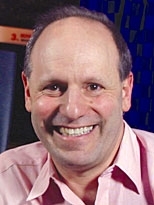Ever since the 2000 presidential race, a national debate has raged over protecting one of democracy's most fundamental rights: the right to vote. But for voters with disabilities, every Election Day poses obstacles comparable to those infamous butterfly ballots of Palm Beach County, Fla.
MIT Associate Professor of Media Arts and Sciences Ted Selker has long been intrigued by how to ease the polling-place challenges facing sight, hearing and developmentally disabled voters. As the MIT director of the Caltech/MIT Voting Technology Project, Selker has built and tested technology for improving voting security and accuracy, with special attention to the needs of impaired voters.
On July 26, Selker will receive the Thomas Paine Award from the American Association of People With Disabilities (www.aapd-dc.org), during the annual event commemorating the passage of the Americans With Disabilities Act, passed on July 26, 1990. The award, being given only for the second time, goes to someone who has made a "significant contribution to increasing the voting participation of people with disabilities," said Jim Dickson, AAPD vice president for governmental affairs.
"Ted has been extremely helpful in both the technology and hardware, but he has also been extremely important teaching the disability-advocacy community and election officials about the accuracy, security and accessibility for people with disabilities, which turns out to be good for everybody," Dickson said.
Indeed, new technologies aimed at disabled voters, Selker said, may lead to better voting systems for all.
"I believe in universal design," Selker said. "I see over the years when you do something that helps the disabled, that can improve the design for everyone."
An estimated 37 million Americans of voting age need some kind of voting assistance, according to Dickson.
"You realize this is not a small problem. This is what you could use to defraud," Selker said. A result that is "off by 1 percent is enough to destroy the validity of the election," he said.
Selker's work has focused on improving the human interface in voting machines to better orient voters, provide visual cues and feedback and allow voters to double-check choices. He has also created "audio voting" technology that lets voters hear instructions on earphones; he has shown that an "audio trail" is more verifiable than a paper trail.
Dickson also praised Selker and the Voting Technology Project (www.vote.caltech.edu) for developing hard data on voting problems, an alternative to partisan speculation about election follies.
In 2004, for example, Selker ran a 100-person study in New York City that focused on improving electronic voting for people with reading disabilities, who may constitute 15 percent of all voters. The study found that those diagnosed as reading impaired tended to go through electronic ballots much more slowly, but more systematically. In some areas -- such as the "fall-off" rate in failing to complete long ballots --��this group performed better than those without reading difficulties, he said.
The study has helped to produce better electronic ballot designs that will reduce the "the errors of typical voters -- not just reading-disabled voters -- by 50 percent," Selker said.






